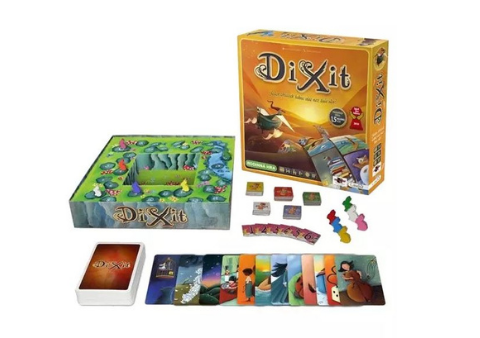Takenoko is a fun activity not only for adults, but also for the whole for families. Although the rules state that players must be 13 years of age or older, younger players can play. The panda, the gardener and the bamboos are very fun components of the game and make children want to play. Here are the rules so you can start enjoying the game.
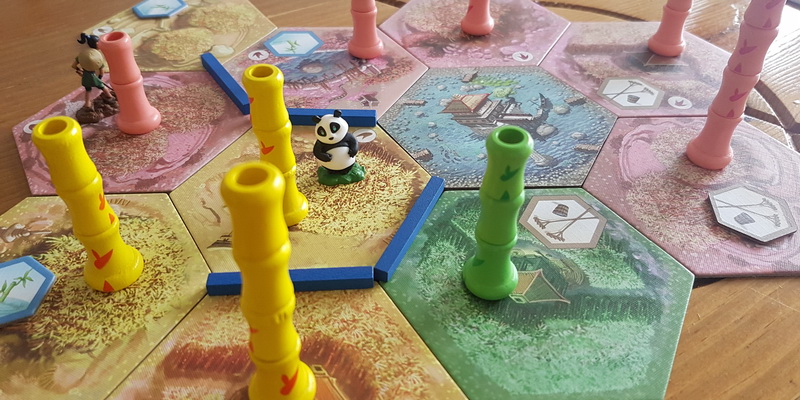
Frequently asked questions
❓ At what age is Takenoko recommended?
Takenock's rules are good for people from 13 years.
❓ How many people can play Takenoko?
Takenoko's game adapted 2-4 people.
❓ How long does it take to play Takenoko?
Playing according to Takenock's rules will take about 45 minutes.
Game set:
- 28 land area tables;
- 36 parts of green bamboo;
- 30 yellow bamboo parts;
- 24 pink bamboo parts;
- 20 irrigation channels;
- 9 refinement markers;
- 46 task cards;
- 4 player tables;
- 8 Action Chips;
- weather dice;
- Panda;
- Gardener;
- Rulebook.
Preparing for the game
- A "pool" card is placed in the middle of the table and the gardener and the panda are placed on it. The rest of the land cards are mixed and placed one on top of the other (to form a deck). The irrigation channels and the sorted improvement tokens are placed side by side.
- The Emperor card is set aside and the remaining cards are separated by type, shuffled and placed face down in three piles (decks). Each deck must contain only one type of card.
- Each player must be dealt a personal game board, two action chips and one different card. Cards cannot be shown to other players.
- According to the rules, the person with the highest rank plays first. Although it is possible to choose amongst yourselves who will start.
Takenoko Game - Rules
Game progress
The game is played clockwise. Two actions must be performed consecutively during one turn.
- Determining weather conditions;
- Performing selected actions and completing available tasks.
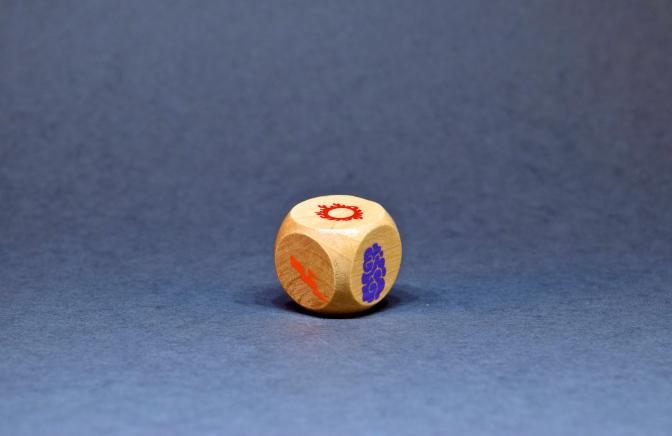 Determining weather conditions
Determining weather conditions
Note: Weather conditions are determined only from the second round of play. In the first round, everyone starts from the second action.
A dice is rolled to determine the weather. The picture that remains on the top of the dice shows the weather conditions prevailing at the time of that roll.
 Sun - the bamboo garden basks in warm sunshine
Sun - the bamboo garden basks in warm sunshine
The player can take an additional action. It is important that it is different from the other actions he performs
 Rain - it feeds young bamboo shoots
Rain - it feeds young bamboo shoots
The player can place one bamboo part on an irrigated area of land that he [has] chosen. It is important that the bamboo does not exceed 4 parts in height.
 Wind - a refreshing breeze in the garden
Wind - a refreshing breeze in the garden
A player may perform two identical actions during his turn. He is not required to do so. But the wind allows him to do not necessarily different actions.
 Storm - the panda is afraid of the rumble of thunder and flashes of lightning
Storm - the panda is afraid of the rumble of thunder and flashes of lightning
The player can move the panda onto a selected area of land. The panda eats one part of the bamboo on that area.
 Clouds - they darken the sky, but they don't cause trouble. Time to work
Clouds - they darken the sky, but they don't cause trouble. Time to work
The player chooses one upgrade chip from the unused ones. He can place that token on the selected land area or keep it on his game board. When there are no more enhancement tokens left, the player instead chooses any other weather to act upon.
 Question mark
Question mark
The player chooses any air that is useful to him.
Takenock game - performing selected actions and completing available tasks
- Two of the five possible actions must be taken. The player can choose the actions at his discretion.
- The action is selected by placing action chips on the player's card. They must be placed in the appropriate places.
- The order of the actions is up to the player.
- After his turn, the player passes the weather dice to the player sitting to his left.
Note: The actions selected must be different.
5 possible actions
Land areas
Three landlets are drawn and one is kept for itself.
Irrigation channels
One irrigation channel shall be taken from the common pile. It can either be used immediately or kept for the future.
Gardener
The gardener is moved in a straight line in the chosen direction. In the box where the gardener stops and in the adjacent plots of the same colour, the gardener adds one bamboo shoot.
Note: Bamboos grow only in irrigated areas.
Panda
The panda is moved in a straight line in the selected direction. Where the panda finishes walking, it eats one bamboo shoot,
Tasks
The selected task card is pulled. The player takes the drawn card for himself.
- Land areas;
- Irrigation channels;
- Gardener.
Game cards
 Land areas
Land areas
three land area cards are drawn from the selected pile. One of them is taken for yourself and the other two are placed face down at the bottom of the pile of cards.
The selected card is connected to the playing field when it is face up. It can be connected according to the following rules:
- the edge of the card touches the "pool" table;
- it is in edge contact with two other land cards.
Only a species of bamboo of that colour can grow in a plot of land.
Note: Land in contact with a "pool" or pond is irrigated. A section of bamboo shall be placed in such an area.
Some areas of land have various additions.
 Irrigation channels
Irrigation channels
One irrigation channel shall be taken from the common pile.
The irrigation channel is placed on the playing field or stored for future reference. Once a player has a previous irrigation channel (placed on his personal game board), then that channel can be placed on the playing field during any turn. This will not be counted as a separate move.
Irrigation channels should be placed between the two plots of land (on the edge connecting them). Irrigation channels must not be placed on the edges of the 'pool'.
Irrigation of the land area occurs in the following cases:
- one side in contact with the pool;
- at least one side is adjacent to an irrigation channel;
- has a pond improvement.
When the land is first irrigated, one part of the bamboo is added immediately. This can only be done once.
When the irrigation canal irrigates two areas, we then place one part of the bamboo in each of these areas.
 Gardener
Gardener
The gardener can only be moved in one direction in as many boxes as the player wishes. The gardener cannot move in empty spaces where there are no land cells. In the box where the gardener has finished his journey, add one bamboo part. Do the same in the adjacent squares.
A maximum of 4 bamboo shoots per field. Therefore, the gardener cannot add more.
Note: Bamboo only grows in irrigated areas, so if the gardener has finished their trip in a non-irrigated area, we will not place bamboo parts there. The same applies to non-irrigated fields bordering the gardener's journey's end point.
Note: The components that appear on the players' tables belong to each individual. Everything on the playing field (land, irrigation channels, bamboos and upgrades) belongs to all players jointly.
 Panda
Panda
The panda can be moved in a straight line through as many squares as the player wishes. The direction can also be selected. Empty spaces cannot be moved.
Where the panda stops, it eats one part of the bamboo. The player places the eaten bamboo on his/her playing card at the location indicated. This part of the bamboo can then be used later in the game to complete tasks.
Remark:
- the gardener and the panda can move around on the "pool";
- No player may cross an empty space on the game board;
- A panda or a gardener can only act if they move at least one box.
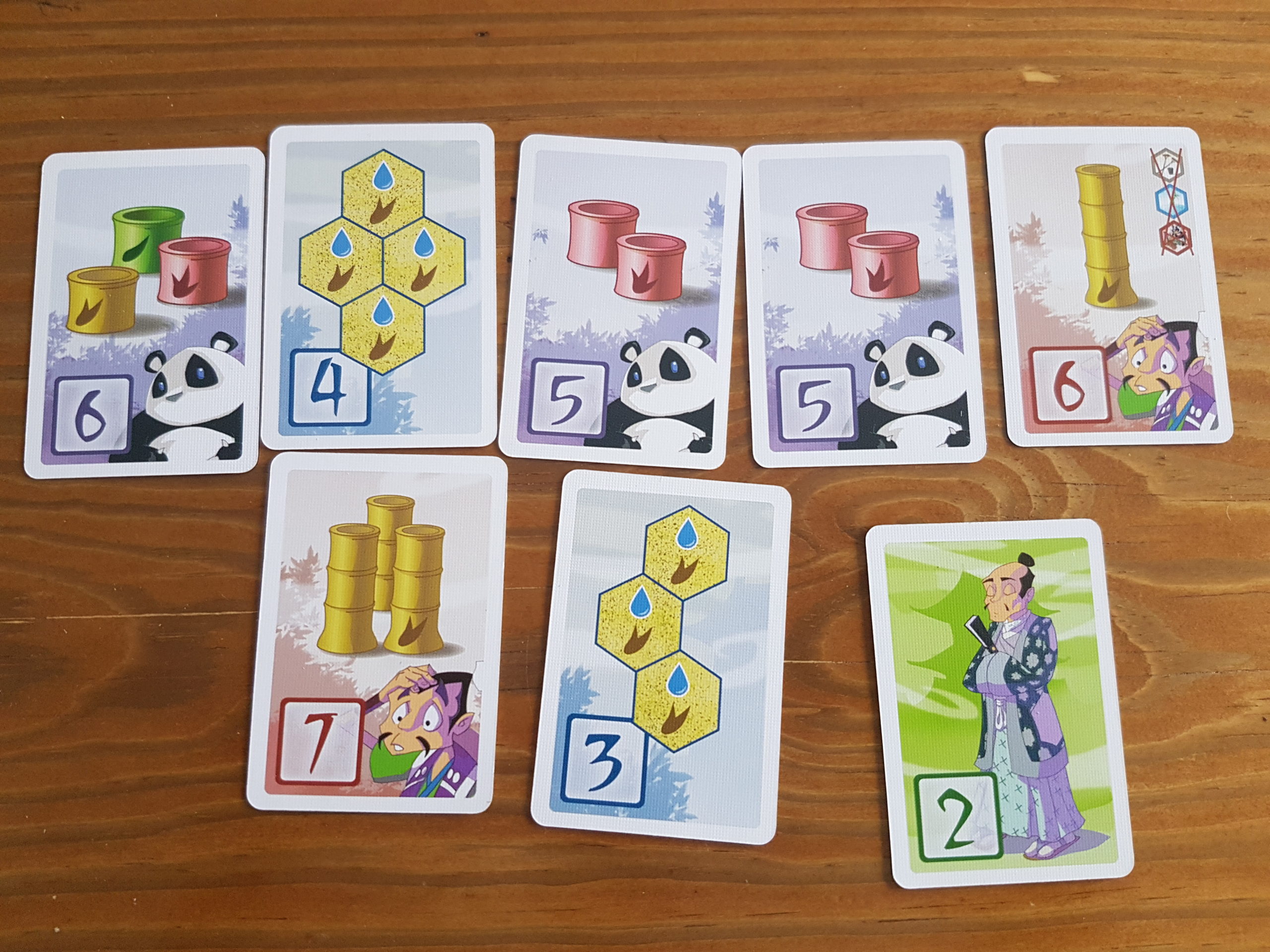 Tasks
Tasks
The task card is pulled and taken for yourself. The player can choose the type of card.
Note: Each player can hold a maximum of 5 task cards. A new card can only be drawn when at least one of the existing task cards has been completed and there are fewer than 5 cards left in the hand again.
Completing tasks
Tasks can be completed at any time during the walk. This does not count as one action.
When the task is completed, the player places the task card face up in front of him. Multiple tasks can be completed in one turn.
Note: Players do not lose completed tasks even if the game conditions change. It is important that the conditions match the task when it is performed.
Land area tasks
The card shows three or four connected areas of land. The task can only be completed if the image on the playing field matches the image on the card.
Note: All fields shown must be irrigated
Gardener's tasks
The cards show:
- a bamboo in four parts and one of the improvements;
- a four-piece bamboo with no card enhancements;
- several three-part bamboos on different areas of land, also without improvements;
- The task can only be executed if the image on the playing field and the card match.
Panda tasks
The cards show two or three parts of a bamboo, which can be in different colours.
The task requires the use of the bamboo pieces accumulated on the player's personal game board. The colours of the pieces must match the colours on the card. Once the task has been completed, the used bamboo parts are placed in a common pile near the playing field.
Advanced: When a card is drawn that has the same conditions as the image on the playing field, it must be discarded immediately and a new card drawn.
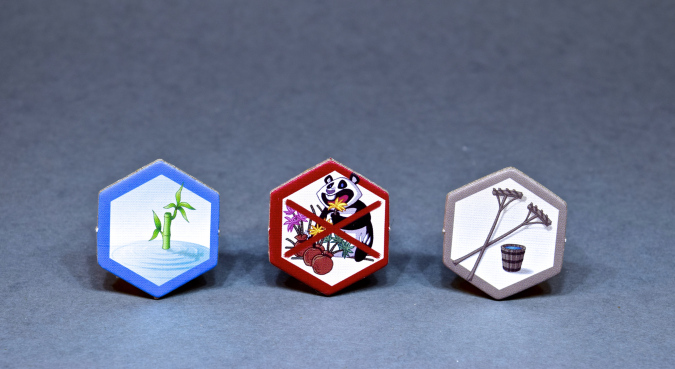 Improvements
Improvements
Improvements come in two forms: they are either drawn immediately on the playing cards, or they can be added.This can be done by rolling the weather dice and rolling the "clouds" to give the player an improvement marker. When a pre-obtained upgrade marker is used, it does not count as a game move and players can perform this action at any time during their turn.
Only those fields where bamboo does not grow can be improved. I.e. it has just been built but is not irrigated or the panda has eaten all the bamboo.
Note: Only one upgrade can be placed on one playing field.
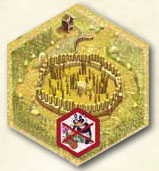 Fencing
Fencing
It protects the bamboos that grow in this area. The panda cannot eat them when it stands on this field. Please remember that a panda can move and stand over this box.
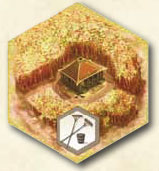 Fertilisers
Fertilisers
They increase the fertility of the land. So every time you put two bamboo parts on this field instead of one.
Note: Remember that there cannot be more than 4 bamboo parts per field.
 Pond
Pond
The pond irrigates this field and therefore does not need an irrigation canal. When this field is placed, one bamboo part grows immediately.
Note: The irrigation channels must not be laid from the pond area.
Takenoko's game is over
When it ends Game depends on how many people play it:
- 2 people: the last round starts when one player completes his 9th personal challenge;
- 3 players: when someone completes the eighth task;
- 4 people - when someone completes the seventh task.
The person who starts the last lap receives the Emperor card and ends their turn. The Emperor card is worth two points.
Note: When the last round of the game starts, the player who started the game can still complete the tasks on the cards.
- All other players also have one last move. They have one last turn to complete as many tasks as possible.
- When the last player has finished his turn, the Emperor rewards the most deserving subordinates (other players).
- Each person receives as many points as the number of completed tasks written on the task cards. No points are awarded for a card that is in the hand.
- The winner is the one with the most points. The Emperor congratulates him.
- When two players score the same amount of points, the winner is the one who has completed more panda tasks. If they have the same number of cards, a tie is declared.
Advice for newcomers
If you're playing for the first time, you need to remember:
- The first move is to take a plot of land, otherwise there will be no place to work;
- You can accumulate irrigation channels on your player table. This way you can use them at any time, as the water on the playing field runs out very quickly;
- for the first time, you can play without a weather dice. This will give you a better understanding of the nuances of the game.
When you run out of game components:
- if you run out of bamboo shoots, you can temporarily use shoots of another colour;
- when there are less than three unused plots left in a closed pile, you choose one or take the last one. When there are no more vacant plots, you can no longer perform this action.
Game components
 Land areas
Land areas
There are four types of ground: pool, green, pink and yellow fields. The pool does not have bamboo, while the other fields have bamboo of specific colours.
 Bamboo
Bamboo
The bamboos come in three colours: green, pink and yellow. They can only grow on land of the same colour.
 Irrigation channels
Irrigation channels
Bamboos cannot grow without water, so irrigation channels can provide the water they need.
 Improvements
Improvements
They are needed to facilitate the growth of bamboo. Some cards already have enhancements and others need to have enhancements added.
 Gardener
Gardener
It oversees the growth of bamboo.
 Panda
Panda
It eats grown-up bamboo.
 Tasks
Tasks
Completed tasks will earn players points, which will be rewarded by the Emperor at the end of the game.
 Weather dice
Weather dice
It determines the weather conditions that will prevail during the walk.
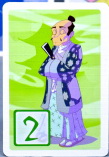 The Emperor
The Emperor
At the end of the game, he will announce the winner.
Note: If the players do not distinguish between colours, they can identify the different types of bamboo from special icons.


